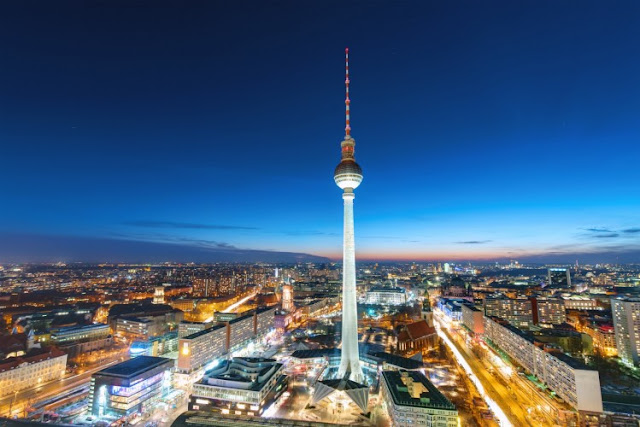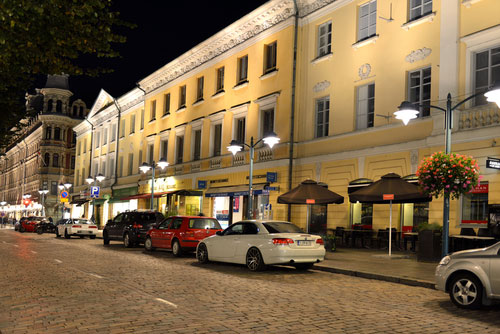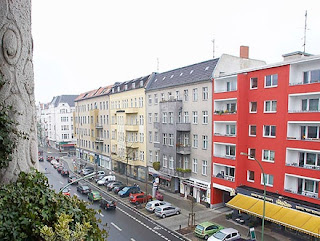TAG | smart street lights
4
Helsinki’s smart street lights will find you a parking place
Comments off · Posted by admin in LED, Philips LED
THE CITY of Helsinki has installed internet-connected street lights which find motorists a parking place.
The pilot deployment uses miniature Internet-Protocol video cameras mounted on the luminaires to monitor the spaces. These cameras generate data which is interpreted by cloud-based image analytics to assess if the parking space is available. This real-time parking occupancy information can then be pushed to city authorities and motorists. Additionally, this data can be shared with third-party app developers.

A micro camera from Super Circuits similar to the ones deployed in the Helsinki smart parking experiment. The increasing miniaturisation of video cameras means they can easily be incorporated in both outdoor and indoor lighting. Manufacturers say that as prices fall, they could replace passive infra-devices so that, for instance, instead of knowing if a meeting room is occupied, as a PIR can detect, a video camera could be used to determine exactly how many people are present.
It’s also part of a wider programme in which the Public Works Department of the City of Helsinki is considering using public lighting as a potential backbone for Internet of Things services.
Parking is considered a potential killer app for so-called smart cities. Studies in San Francisco have shown that 30 per cent of the traffic congestion in cities is caused by drivers spending time searching for a parking spot, so reducing this time can lower air pollution and traffic noise. Additionally, knowing the location and quantity of parking spaces can help cities cut down on illegal parking and develop a dynamic pricing structure based on use and occupancy data.
Continuous tracking of parking spaces also helps identify parking bottlenecks and offers a means to enable traffic guidance. In the future, outdoor luminaires could provide light indications, making it easy to identify open parking places on city streets.
Philips says the initiative has provided Helsinki with first-hand information about the suitability of video technology for smart parking and helped the city gain valuable insights into how this type of monitoring can be deployed. The company estimates that lighting-based parking management can reduce average parking search time by 40 per cent, reduces average traffic in terms of miles per day by 30 per cent and improve safety by reducing parking spot searches.
The lighting industry sees huge potential in street lighting becoming the digital backbone of smart cities. Trials are currently being conducted into the use of public luminaires to deliver Wi-Fi as well as monitor the use of firearms and the levels of snow.
See LED street lighting at Novel Energy Lighting
dynamic smart parking · Helsinki · led street lights · Novel Energy Lighting · philips lighting · smart cities · smart street lights
The LED revolution has concluded, prices are falling and the industry’s attention is turning to the digital world, to the internet of things and smart cities.
In a Lux Today special edition, we examine smart cities and ask how is lighting improving our urban environments? Why are more and more cities adopting smart technology? And why does the lighting industry need to move quickly to take advantage of this new innovation?
data collection · li-fi · Novel Energy Lighting · philips citytouch · smart cities · smart street lights · visible light communication
9
Will Tunable Street Light Breakthrough Silence LED Critics?
Comments off · Posted by admin in LED
Will tunable street light breakthrough silence LED critics? PLUS: Smart street lights tell cities when to salt frozen roads. AND: LED protest signs take centre stage at demonstrations. Lux Today 7 February 2017.
energy efficient lighting · led lighting · lux today · Novel Energy Lighting · smart street lights · tunable street lights
 |
| Berlin is undergoing a street lighting revolution, 5,500 LED street lights have already been deployed, while a further 2,500 are being fitted this year. |
An intelligent wireless lighting network has been installed in the Wilmersdorf district of Berlin. The street lights are able to adjust their brightness based on real-time human presence.
The intelligent lighting minimises energy waste and acts to lower light pollution by ensuring that streetlights do not burn at full capacity throughout the night when the streets are often deserted.
The sensor network is a major breakthrough in Berlin’s street lighting renovation efforts. 5,500 LED street lights have already been deployed, while a further 2,500 are being fitted this year.
The innovative street lighting approach was praised by Christian Gaebler, permanent secretary at Berlin’s Senate Department for Urban Development.
‘Residents were continuously dissatisfied with the state of the area,’ commented Christian Gaebler, permanent secretary at Berlin’s Senate Department for Urban Development and the Environment.
‘Now for the first time we are testing a technical innovation that hasn’t existed anywhere in Berlin before, in order to improve the environment,’ Gaebler concluded.
The new LEDs in combination with sensor lighting controllers are allowing Berlin to save up to 80 percent of the energy normally spent on street lighting, whilst cutting maintenance costs.
Smart cities and the internet of things firm Tvilight worked on the project in conjunction with Trilux.
The intelligent network is managed remotely via Tvilight CityManager software, which enables the street lights to be controlled on an individual and group level, whilst delivering a host of analytics such as energy savings reports, failure notifications and traffic heatmaps.
berlin lighting · berlin street lighting · intelligent lighting · LED street · led street lights · Novel Energy Lighting · smart street lights · wireless lighting network
Smart traffic lights to ‘communicate’ with drivers to inform them when they are about to change. PLUS: Saudi scientists create ‘fastest li-fi luminaire’. AND: New building standard aims to protect the health of occupants.
intelligent cities · led lighting · led street lights · lifi · lifi traffic lights · Novel Energy Lighting · smart street lights · smart traffic lighting
The technology behind the hit app Pokemon Go looks set to revolutionise the lighting industry. PLUS: Pioneering new smart street lights are able to detect snowfall. AND: New York City gives go ahead for first underground park. Lux Today July 26th 2016.
augmented reality lighting · gesture lighting · led lighting · Novel Energy Lighting · pokemon go · smart lighting · smart street lights · underground park



